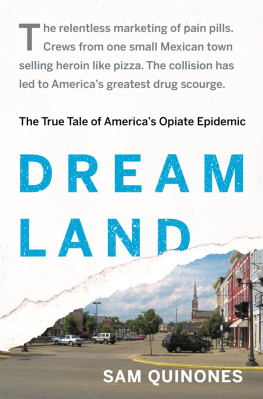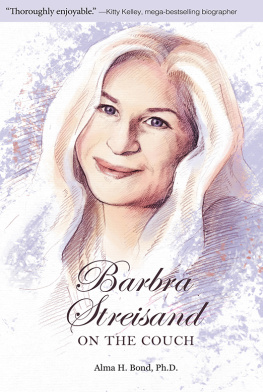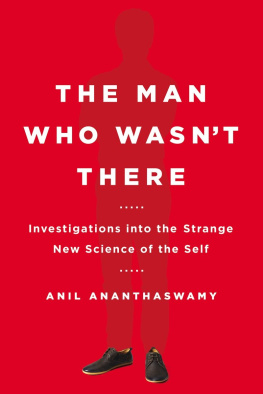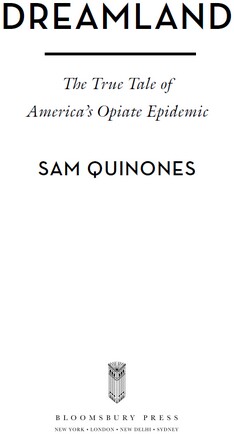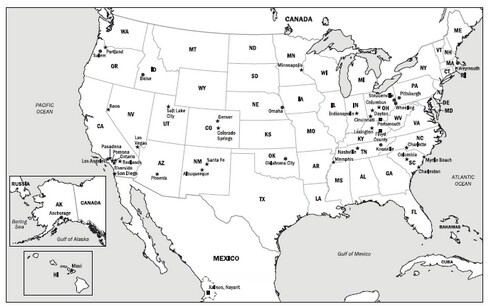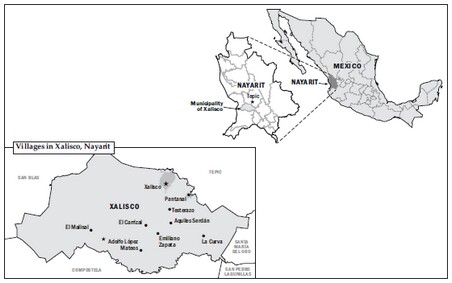Quinones - Dreamland: The True Tale of Americas Opiate Epidemic
Here you can read online Quinones - Dreamland: The True Tale of Americas Opiate Epidemic full text of the book (entire story) in english for free. Download pdf and epub, get meaning, cover and reviews about this ebook. City: Mexico;United States, year: 2015;2016, publisher: Bloomsbury Publishing USA;Bloomsbury Press, genre: Detective and thriller. Description of the work, (preface) as well as reviews are available. Best literature library LitArk.com created for fans of good reading and offers a wide selection of genres:
Romance novel
Science fiction
Adventure
Detective
Science
History
Home and family
Prose
Art
Politics
Computer
Non-fiction
Religion
Business
Children
Humor
Choose a favorite category and find really read worthwhile books. Enjoy immersion in the world of imagination, feel the emotions of the characters or learn something new for yourself, make an fascinating discovery.

- Book:Dreamland: The True Tale of Americas Opiate Epidemic
- Author:
- Publisher:Bloomsbury Publishing USA;Bloomsbury Press
- Genre:
- Year:2015;2016
- City:Mexico;United States
- Rating:5 / 5
- Favourites:Add to favourites
- Your mark:
Dreamland: The True Tale of Americas Opiate Epidemic: summary, description and annotation
We offer to read an annotation, description, summary or preface (depends on what the author of the book "Dreamland: The True Tale of Americas Opiate Epidemic" wrote himself). If you haven't found the necessary information about the book — write in the comments, we will try to find it.
Winner of the NBCC Award for General NonfictionNamed on Amazons Best Books of the Year 2015--Michael Botticelli, U.S. Drug Czar (Politico) Favorite Book of the Year--Angus Deaton, Nobel Prize Economics (Bloomberg/WSJ) Best Books of 2015--Matt Bevin, Governor of Kentucky (WSJ) Books of the Year--Slate.coms 10 Best Books of 2015--Entertainment Weeklys 10 Best Books of 2015 --Buzzfeeds 19 Best Nonfiction Books of 2015--The Daily Beasts Best Big Idea Books of 2015--Seattle Times Best Books of 2015--Boston Globes Best Books of 2015--St. Louis Post-Dispatchs Best Books of 2015--The Guardians The Best Book We Read All Year--Audibles Best Books of 2015--Texas Observers Five Books We Loved in 2015--Chicago Public Librarys Best Nonfiction Books of 2015From a small town in Mexico to the boardrooms of Big Pharma to main streets nationwide, an explosive and shocking account of addiction in the heartland of America.In 1929, in the blue-collar city of Portsmouth, Ohio, a company built a swimming pool the size of a football field; named Dreamland, it became the vital center of the community. Now, addiction has devastated Portsmouth, as it has hundreds of small rural towns and suburbs across America--addiction like no other the country has ever faced. How that happened is the riveting story of Dreamland. With a great reporters narrative skill and the storytelling ability of a novelist, acclaimed journalist Sam Quinones weaves together two classic tales of capitalism run amok whose unintentional collision has been catastrophic. The unfettered prescribing of pain medications during the 1990s reached its peak in Purdue Pharmas campaign to market OxyContin, its new, expensive--extremely addictive--miracle painkiller. Meanwhile, a massive influx of black tar heroin--cheap, potent, and originating from one small county on Mexicos west coast, independent of any drug cartel--assaulted small town and mid-sized cities across the country, driven by a brilliant, almost unbeatable marketing and distribution system. Together these phenomena continue to lay waste to communities from Tennessee to Oregon, Indiana to New Mexico. Introducing a memorable cast of characters--pharma pioneers, young Mexican entrepreneurs, narcotics investigators, survivors, and parents--Quinones shows how these tales fit together. Dreamland is a revelatory account of the corrosive threat facing America and its heartland.
Quinones: author's other books
Who wrote Dreamland: The True Tale of Americas Opiate Epidemic? Find out the surname, the name of the author of the book and a list of all author's works by series.




